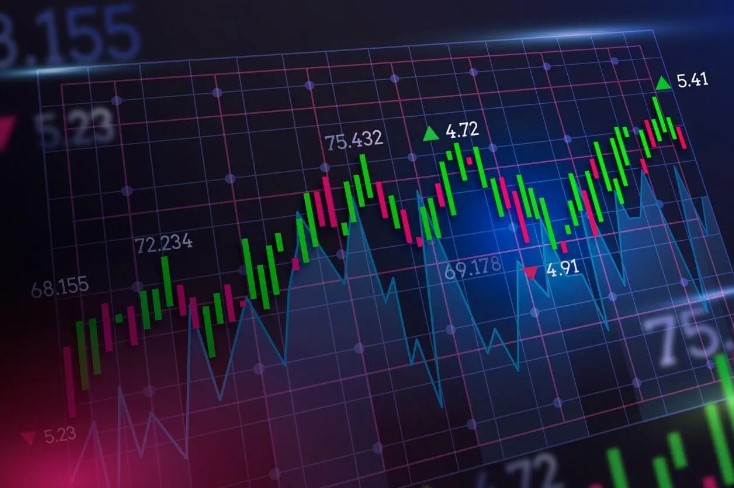Amazon Is a Value Stock in Topsy-Turvy New World of Investing

(Bloomberg) — The demise of the low cost-revenue era is redrawing Corporate America’s earnings map — upending a decade of Wall Avenue knowledge more than which stocks are the discount buys or the significant fliers of tomorrow.
Most Read from Bloomberg
As Significant Tech grapples with a slowdown in income and a new commodity cycle rages, Faang members Amazon.com Inc. and Netflix Inc. are quickly morphing into benefit stocks when Exxon Mobil Corp. attains the coveted expansion-equity halo.
With all bets off on the inflation-lashed financial trajectory, absent are the times when the tech mega caps quickly tumble into the classification of fast-escalating corporations though oil shares trade at inexpensive valuations. Now development-fund professionals, who rode the bull market by only gorging on the tech superstars, are more and more obtaining shares ordinarily noticed as worth bets. And vice versa.
As the lines blur amongst two of the most common stock investing kinds, the major index professionals are far aside on classifying the likes of Amazon and Exxon. That is producing daily life even more durable for inventory managers reshuffling their holdings like hardly ever right before.
Consider Stephen Yiu, who amassed $1 billion in less than 5 years by betting on the tech increase. These times, the supervisor of the £735 million Blue Whale Growth Fund is trying to reveal to consumers why he marketed off all his shares in Meta Platforms Inc. and Alphabet Inc.
“We’re now striving to convey to people we’re not a tech fund, and so ideally individuals will have an understanding of, but some of them nonetheless have this notion, like ‘why are you getting into electricity? Which is not tech,’” Yiu said.
In a bid to bounce back again from a 28{9f99fe44fce1aa3c813d0a0ce4da2fbea8a5a58e9d85c4a2927dd8140cb676b5} loss in 2022, the London-based investor is now touting new picks in old-economy sectors like strength and railroad — usually witnessed as price bets in the days of small fascination costs.
Discrepancies on how to outline investing variations like price and development are par for the program for the two discretionary and quant supervisors. Still the scale of the latest divergence in view is noteworthy — and index classifications make any difference supplied about $800 billion of money is tracking these procedures in the exchange-traded fund planet by yourself.
Through a 10 years of a sluggish economy and quick monetary coverage, progress investing was seen as a pure and simple wager on tech, an marketplace whose expansion, in inventory selling prices and earnings, towered about all other individuals. Nevertheless right after the pandemic-induced growth, software program and online companies observed their momentum peter out in a local climate of rising bond yields. In the meantime, a offer shock as a outcome of the Ukraine war, alongside with a recovery in global desire, driven commodity price ranges in a tremendous cycle of kinds.
Now equity investors are acquiring a tricky time figuring out which shares are inherently low-priced wanting and those people that will show an enduring tendency to write-up strong earnings development.
“Before you can easily say tech is advancement and strength is worth, but now the line amongst the two is type of murky and it’s not obvious minimize as prior to,” mentioned Brian Frank, whose Frank Benefit Fund has counted a tech organization, PayPal Holdings Inc., as one particular of its prime stock holdings. “Value traders ignoring expansion is a oversight.”
In its once-a-year reconstitution in December, expansion and value indexes run by S&P Dow Jones Indices saw record turnover, with almost a 3rd of their marketplace capitalization affected, according to Hamish Preston, director of US fairness indices. Energy’s representation in the growth section jumped to 8{9f99fe44fce1aa3c813d0a0ce4da2fbea8a5a58e9d85c4a2927dd8140cb676b5} from 1.4{9f99fe44fce1aa3c813d0a0ce4da2fbea8a5a58e9d85c4a2927dd8140cb676b5}, thanks to a surge in share rates — the only industry with constructive returns final year — and a wave of earnings updates. On the benefit aspect, tech saw its weighting maximize by 6 percentage details to 16.8{9f99fe44fce1aa3c813d0a0ce4da2fbea8a5a58e9d85c4a2927dd8140cb676b5} as the marketplace grew to become home to many of the market’s major losers and analysts minimize their estimates.
Amazon, for example, is even now provided in the S&P development index but has a better weighting in its new household – the price gauge — just after entering the latter for the initially time in December.
S&P’s type benchmarks had been linked to around $380 billion of belongings as of the finish of 2021, in accordance to the latest details accessible.
There is speculation that S&P’s rival, FTSE Russell, may comply with accommodate throughout its yearly reconstitution in June to reflect the reversal in business fortunes if the pattern holds.
For now, huge discrepancies have emerged among index companies. Although Exxon ranked variety 4 in the growth cohort of the S&P 500 as of Friday, it experienced no representation of the exact design in the Russell 1000 Index. Similarly in price, Amazon occupied a prime location in the S&P but held zero bearing in the Russell.
In the meantime, S&P set Netflix in the benefit camp whilst the Center for Investigation in Safety Charges — whose indexes run the major price and development ETFs, both from Vanguard — retained it in expansion.
For traders searching to gauge how extended the value revival can keep on, it would make for a messy photo. Based on S&P indexes, the valuation of growth relative to benefit is in the 40th percentile — searching sensible. At Russell, it’s in the 82nd percentile — even now pricey. The gap in between the two measures is the widest in 20 decades, according to Citigroup Inc. strategists including Scott Chronert.
“Historically the two delineations of design (S&P, Russell) have not been too significantly opposed,” they wrote in a be aware previously this thirty day period. “Therefore, it is achievable that we could see related shifts when the Russell indices go via their annual reconstitution mid-yr.”
And there is no warranty that tech’s increase or energy’s slide will final. Weeks into 2023, their fate has reversed once again with tech now managing ahead amid speculation the Federal Reserve will raise costs much more slowly and gradually on signs of inflation peaking. The tech-significant Nasdaq 100 is up nearly 8{9f99fe44fce1aa3c813d0a0ce4da2fbea8a5a58e9d85c4a2927dd8140cb676b5} this calendar year, in contrast with 4{9f99fe44fce1aa3c813d0a0ce4da2fbea8a5a58e9d85c4a2927dd8140cb676b5} for the S&P 500.
“We can’t predict what will take place in the forthcoming reconstitution,” claimed Catherine Yoshimoto, director of products management at FTSE Russell, an LSEG business. “That getting mentioned, our design indexes are built bottom up, that means that we are not seeking to goal a particular sector allocation. It will be an end result of every single underlying company’s design variables.”
–With help from Isabelle Lee.
(Adds tech gains in penultimate paragraph. A preceding edition corrected company title in next paragraph)
Most Go through from Bloomberg Businessweek
©2023 Bloomberg L.P.


/cloudfront-us-east-2.images.arcpublishing.com/reuters/ZCBLZFTVOBJ5VO6T54IKZBEFYI.jpg)




